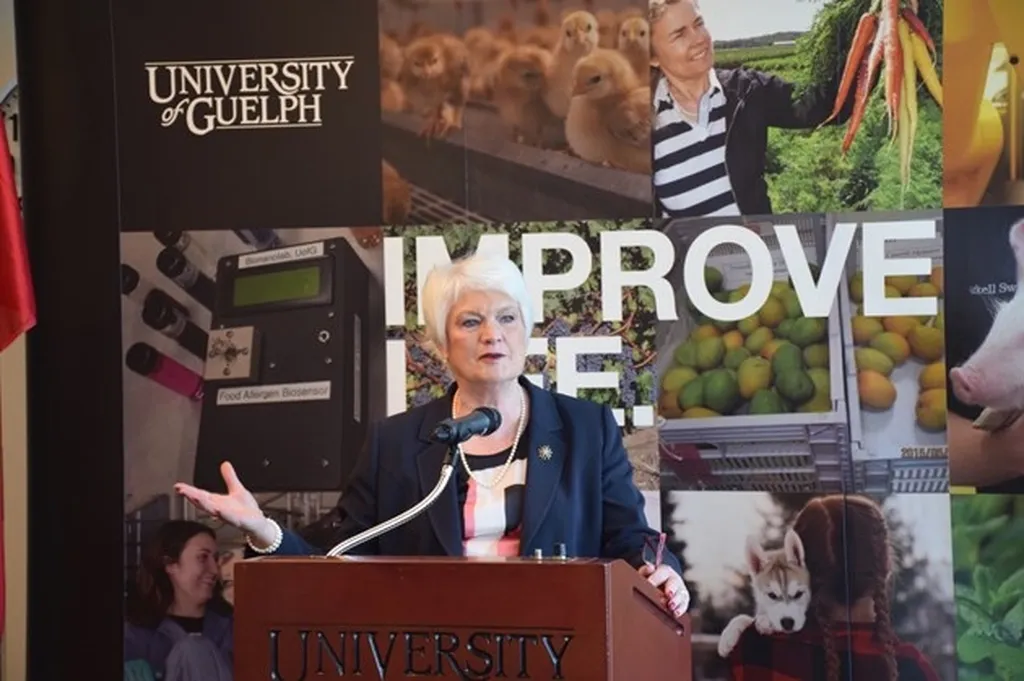In the quest to reduce plastic pollution, researchers have developed a promising biodegradable composite material that could revolutionize the packaging industry. Matias Menossi, a researcher at the University of Guelph’s Bioproducts Discovery and Development Centre, led a study that combined poly(butylene adipate-co-terephthalate) (PBAT) with silane-treated wollastonite (S-W) to create a sustainable packaging solution. The results, published in *Macromolecular Materials and Engineering* (which translates to “Macromolecular Materials and Engineering” in English), offer a glimpse into the future of eco-friendly materials.
The study focused on creating biodegradable composites using PBAT, a known biodegradable polymer, and S-W, an inorganic filler. Menossi and his team employed melt extrusion and blow-film extrusion techniques to produce composite films with 15 and 25 weight percent of S-W. The films were then subjected to uniaxial stretching in the machine direction to evaluate the impact on their properties.
“Our goal was to enhance the mechanical and thermal properties of PBAT by incorporating S-W and studying the effects of uniaxial stretching,” Menossi explained. The results were impressive. At 15 weight percent S-W, the tensile strength increased by approximately 500%, and the Young’s modulus saw a 1000% improvement at a stretch ratio of six. This significant enhancement in mechanical properties makes the material a strong contender for sustainable packaging applications.
The study also revealed that uniaxial stretching significantly boosted the film’s crystallinity due to strain-induced crystallization. This was confirmed through thermal and X-ray diffraction analyses. “The alignment of molecular chains in the machine direction was evident, but we also observed weak adhesion between the filler and polymer matrix at high stretch ratios,” Menossi noted. This dual effect highlights the complex interplay between material composition and processing techniques.
One of the most notable findings was the improvement in water vapor barrier properties. The PBAT/S-W25% blown film at a stretch ratio of six exhibited a 42% improvement in barrier performance compared to the unstretched version. This enhancement, driven by increased crystallinity, positions PBAT/S-W as a viable alternative to single-use plastics.
The commercial implications of this research are substantial. As the demand for biodegradable packaging continues to rise, industries are seeking sustainable solutions that do not compromise on performance. The PBAT/S-W composite offers a promising avenue for developing eco-friendly packaging materials that meet the stringent requirements of the packaging industry.
“This research opens up new possibilities for the development of biodegradable materials that can replace traditional plastics,” Menossi said. “The enhanced properties of our composite material make it an attractive option for various applications, from food packaging to industrial materials.”
The study’s findings not only contribute to the scientific community’s understanding of biodegradable composites but also pave the way for future developments in sustainable packaging. As industries strive to reduce their environmental footprint, innovations like the PBAT/S-W composite will play a crucial role in shaping a greener future.
In the broader context, this research underscores the importance of interdisciplinary collaboration and the potential of advanced materials to address global challenges. By combining expertise in polymer science, materials engineering, and sustainable development, Menossi and his team have demonstrated the power of innovation in creating solutions that benefit both industry and the environment.
As the world continues to grapple with the consequences of plastic pollution, the development of biodegradable packaging materials offers a beacon of hope. The PBAT/S-W composite, with its enhanced properties and eco-friendly attributes, represents a significant step forward in the quest for sustainable packaging solutions. The research published in *Macromolecular Materials and Engineering* not only highlights the potential of this composite but also sets the stage for further advancements in the field.

